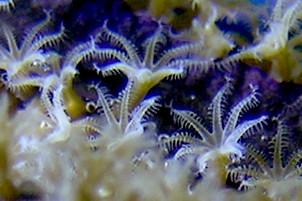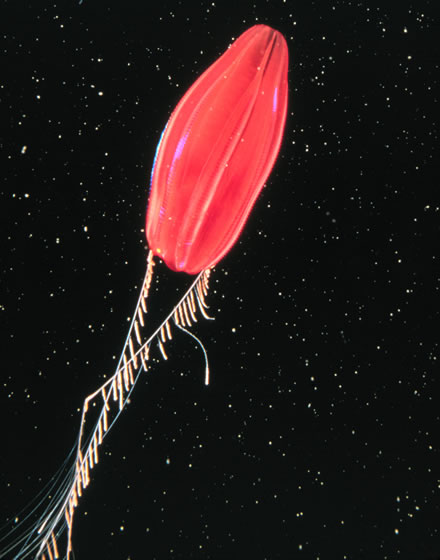|
Pseudodiploria Clivosa
''Pseudodiploria'' is a genus of stony corals in the subfamily Faviinae of the family Mussidae. This genus was erected in 2012, having been split off from the genus '' Diploria''. This genus is found in the tropical and subtropical West Atlantic Ocean and the Caribbean Sea. Characteristics ''Pseudodiploria'' is a colonial coral. Budding is always intracalicular, occurring inside the oral disc of the polyp, within the whorl of tentacles. The corallites are meandroid, with a number of centres being linked serially, separated by valleys some wide. There is a continuous, trabecular columella but hardly any coenosteum. The septal teeth are three-pointed and are orientated transversely to the septal plane. Species The World Register of Marine Species The World Register of Marine Species (WoRMS) is a taxonomic database that aims to provide an authoritative and comprehensive catalogue and list of names of marine organisms. Content The content of the registry is edited and main ... [...More Info...] [...Related Items...] OR: [Wikipedia] [Google] [Baidu] |
Pseudodiploria Strigosa
''Pseudodiploria strigosa'', the symmetrical brain coral, is a Colony (biology), colonial species of Scleractinia, stony coral in the Family (biology), family Mussidae. It occurs on reefs in shallow water in the West Atlantic Ocean and Caribbean Sea. It grows slowly and lives to a great age. Description The symmetrical brain coral forms smooth flat plates or massive hemispherical domes up to in diameter. The surface is covered with interlinking convoluted valleys in which the polyp (zoology), polyps sit in cup-shaped depressions known as corallites. Each of these has a number of radially arranged ridges known as Septum (coral), septa which continue outside the corallite as Costa (coral), costae and link with those of neighbouring corallites. The ridges separating the valleys are smoothly rounded and do not usually have a groove running along their apex as does the rather similar Diploria labyrinthiformis, grooved brain coral (''Diploria labyrinthiformis''). The coral has Symbios ... [...More Info...] [...Related Items...] OR: [Wikipedia] [Google] [Baidu] |
Genus
Genus (; : genera ) is a taxonomic rank above species and below family (taxonomy), family as used in the biological classification of extant taxon, living and fossil organisms as well as Virus classification#ICTV classification, viruses. In binomial nomenclature, the genus name forms the first part of the binomial species name for each species within the genus. :E.g. ''Panthera leo'' (lion) and ''Panthera onca'' (jaguar) are two species within the genus ''Panthera''. ''Panthera'' is a genus within the family Felidae. The composition of a genus is determined by taxonomy (biology), taxonomists. The standards for genus classification are not strictly codified, so different authorities often produce different classifications for genera. There are some general practices used, however, including the idea that a newly defined genus should fulfill these three criteria to be descriptively useful: # monophyly – all descendants of an ancestral taxon are grouped together (i.e. Phylogeneti ... [...More Info...] [...Related Items...] OR: [Wikipedia] [Google] [Baidu] |
Scleractinia
Scleractinia, also called stony corals or hard corals, are marine animals in the phylum Cnidaria that build themselves a hard skeleton. The individual animals are known as polyps and have a cylindrical body crowned by an oral disc in which a mouth is fringed with tentacles. Although some species are solitary, most are colonial. The founding polyp settles and starts to secrete calcium carbonate to protect its soft body. Solitary corals can be as much as across but in colonial species the polyps are usually only a few millimetres in diameter. These polyps reproduce asexually by budding, but remain attached to each other, forming a multi-polyp colony of clones with a common skeleton, which may be up to several metres in diameter or height according to species. The shape and appearance of each coral colony depends not only on the species, but also on its location, depth, the amount of water movement and other factors. Many shallow-water corals contain symbiont unicellular organis ... [...More Info...] [...Related Items...] OR: [Wikipedia] [Google] [Baidu] |
Family (biology)
Family (, : ) is one of the eight major hierarchical taxonomic ranks in Linnaean taxonomy. It is classified between order and genus. A family may be divided into subfamilies, which are intermediate ranks between the ranks of family and genus. The official family names are Latin in origin; however, popular names are often used: for example, walnut trees and hickory trees belong to the family Juglandaceae, but that family is commonly referred to as the "walnut family". The delineation of what constitutes a family—or whether a described family should be acknowledged—is established and decided upon by active taxonomists. There are not strict regulations for outlining or acknowledging a family, yet in the realm of plants, these classifications often rely on both the vegetative and reproductive characteristics of plant species. Taxonomists frequently hold varying perspectives on these descriptions, leading to a lack of widespread consensus within the scientific community ... [...More Info...] [...Related Items...] OR: [Wikipedia] [Google] [Baidu] |
Mussidae
Mussidae is a family of stony coral in the order Scleractinia. Following a taxonomic revision in 2012, the family is now restricted to species found in the Atlantic Ocean, with Pacific species transferred to the new family Lobophylliidae. Many species are referred to as brain coral because their generally spheroid form and grooved surface resembles the convolutions of a brain. Members of this family are found in the reef aquarium trade. Though popular in captivity, they are under threat from environmental destruction like coral bleaching. The Mussidae is one of the coral families most vulnerable to climate change. Taxonomy The family Mussidae has long been recognised on morphological grounds but recent molecular analysis has shown that it, and several other related families, are polyphyletic, the similarities between the species having occurred through convergent evolution. Additionally, some traditional genera such as '' Favia'' and '' Scolymia'' have been found to be polyp ... [...More Info...] [...Related Items...] OR: [Wikipedia] [Google] [Baidu] |
Diploria
''Diploria'' is a monotypic genus of massive reef building stony corals in the family Mussidae. It is represented by a single species, ''Diploria labyrinthiformis'', commonly known as grooved brain coral and is found in the western Atlantic Ocean and Caribbean Sea. It has a familiar, maze-like appearance. Description This species of reef-building coral has a hemispherical, brain-like shape with a brown, yellow, or grey colour. It has characteristic deep, interconnected double-valleys. These polyp-bearing valleys are each separated by grooved ambulacral ridges. There may be a difference in colour between the valleys and the grooves. ''Diploria labyrinthiformis'' can grow upward at a rate of approximately 3.5 millimeters per year, achieving about in diameter. During its planktonic larval stage, the coral has locomotion. After that time, it becomes permanently sessile. This species is a suspension feeder, and survives mainly on zooplankton and bacteria. These are captured by t ... [...More Info...] [...Related Items...] OR: [Wikipedia] [Google] [Baidu] |
Colony (biology)
In biology, a colony is composed of two or more Biological specificity#Conspecific, conspecific individuals living in close association with, or connected to, one another. This association is usually for mutual benefit such as stronger defense or the ability to attack bigger prey. Colonies can form in various shapes and ways depending on the organism involved. For instance, the bacterial colony is a cluster of identical cells (clones). These colonies often form and grow on the surface of (or within) a solid medium, usually derived from a single parent cell. Colonies, in the context of development, may be composed of two or more unitary (or solitary) organisms or be Modularity, modular organisms. Unitary organisms have determinate development (set life stages) from zygote to adult form and individuals or groups of individuals (colonies) are visually distinct. Modular organisms have indeterminate growth forms (life stages not set) through repeated iteration of genetically identi ... [...More Info...] [...Related Items...] OR: [Wikipedia] [Google] [Baidu] |
Polyp (zoology)
A polyp in zoology is one of two forms found in the phylum Cnidaria, the other being the medusa (biology), medusa. Polyps are roughly cylindrical in shape and elongated at the axis of the vase-shaped body. In solitary polyps, the aboral (opposite to oral) end is attached to the substrate (biology), substrate by means of a disc-like holdfast (biology), holdfast called a pedal disc, while in colony (biology), colonies of polyps it is connected to other polyps, either directly or indirectly. The oral end contains the mouth, and is surrounded by a circlet of tentacles. Classes In the class Anthozoa, comprising the sea anemones and corals, the individual is always a polyp; in the class Hydrozoa, however, the individual may be either a polyp or a medusa (biology), medusa, with most species undergoing a biological life cycle, life cycle with both a polyp stage and a medusa stage. In the class Scyphozoa, the medusa stage is dominant, and the polyp stage may or may not be present, depen ... [...More Info...] [...Related Items...] OR: [Wikipedia] [Google] [Baidu] |
Tentacle
In zoology, a tentacle is a flexible, mobile, and elongated organ present in some species of animals, most of them invertebrates. In animal anatomy, tentacles usually occur in one or more pairs. Anatomically, the tentacles of animals work mainly like muscular hydrostats. Most forms of tentacles are used for grasping and feeding. Many are sensory organs, variously receptive to touch, vision, or to the smell or taste of particular foods or threats. Examples of such tentacles are the eyestalks of various kinds of snails. Some kinds of tentacles have both sensory and manipulatory functions. A tentacle is similar to a cirrus, but a cirrus is an organ that usually lacks the tentacle's strength, size, flexibility, or sensitivity. A nautilus has cirri, but a squid has tentacles. Invertebrates Molluscs Many molluscs have tentacles of one form or another. The most familiar are those of the pulmonate land snails, which usually have two sets of tentacles on the head: when ext ... [...More Info...] [...Related Items...] OR: [Wikipedia] [Google] [Baidu] |
Corallite
A corallite is the skeletal cup, formed by an individual stony coral polyp, in which the polyp sits and into which it can retract. The cup is composed of aragonite, a crystalline form of calcium carbonate, and is secreted by the polyp. Corallites vary in size, but in most colonial corals they are less than in diameter. The inner surface of the corallite is known as the calyx. The vertical blades inside the calyx are known as septa SEPTA, the Southeastern Pennsylvania Transportation Authority, is a regional public transportation authority that operates bus, rapid transit, commuter rail, light rail, and electric trolleybus services for nearly four million people througho ... and in some species, these ridges continue outside the corallite wall as costae. Where there is no corallite wall, the blades are known as septocostae. The septa, costae and septocostae may have ornamentation in the form of teeth and may be thick, thin or variable in size. Sometimes there are palifor ... [...More Info...] [...Related Items...] OR: [Wikipedia] [Google] [Baidu] |
Septum (coral)
In corals, a septum (plural septa) is one of the radiating vertical plates lying within the corallite A corallite is the skeletal cup, formed by an individual stony coral polyp, in which the polyp sits and into which it can retract. The cup is composed of aragonite, a crystalline form of calcium carbonate, and is secreted by the polyp. Corallit ... wall. Outside the corallite wall these plates are known as costae (singular costa). The septa may be thick, thin or vary in size. They may have teeth which range from needle-like to blade-like and are often characteristic of different genera. References {{reflist Cnidarian anatomy ... [...More Info...] [...Related Items...] OR: [Wikipedia] [Google] [Baidu] |








